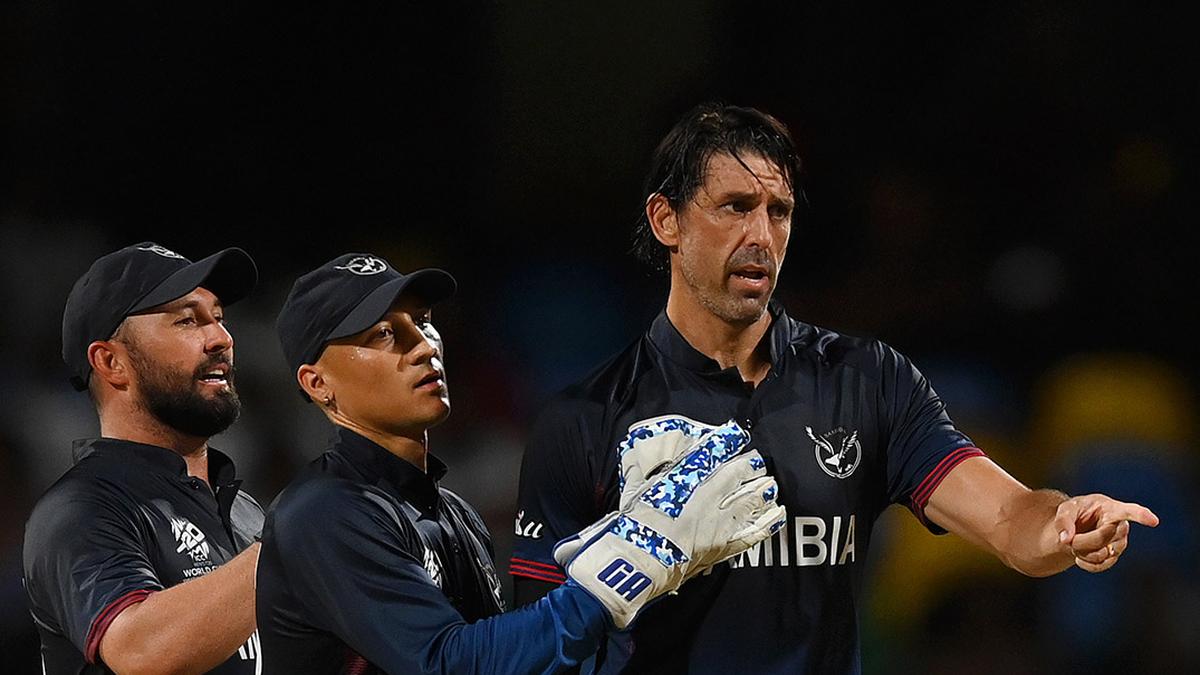
20 teams at the T20 WC— a double-edged sword in pursuit of a level-playing field Premium
The Hindu
The evolution of international cricket, from elitist to inclusive, through the expansion of the T20 World Cup to 20 teams.
One of the great gripes about international cricket in the past was that it was extremely elitist. Until 2018, only 10 teams played Test cricket — that number now stands at 12 — but not all of them at necessarily the same competitive level. The balance in power, complemented by commercial ramifications, meant that the bigger nations played against themselves often and left the rest content with crumbs. That’s how market forces pan out sometimes. The romantic notion of a level-playing field does not exist in competitive sport, which draws a distinct line between the haves and the have-nots (not in the talent stakes, it must be stressed).
Test cricket is a daunting, challenging, often unrewarding format. It requires so much investment, of will as much as anything else, and therefore isn’t naturally the most alluring when there is so much more to play for. Gone are the days when cricket revolved around the five-day game, with the one-day variant largely contributing to amusement until it became a beast that could stand on its own. Today, even 50-over cricket has become a sideshow with the onus on instant gratification and immediate results, thanks to the mushrooming of 20-over cricket as well as other even more abridged formats that, thankfully, haven’t yet spawned country vs country showdowns.
The International Cricket Council has, over the last several years, been mindful of taking cricket to as many countries globally as possible. Towards that end, the ICC lobbied hard and succeeded in ensuring that cricket returned to the Olympics at Los Angeles in 2028, the 20-over format the ideal vehicle through which to regain Olympic approbation. Once the ICC became conscious of the need for cricket to spread its tentacles worldwide through the T20 version, more and more nations were attracted to the sport because all T20s were being given international status. At the last count, there are 80 men’s teams and 70 women’s teams, among them Gibraltar and Eswatini, who enjoy international status when it comes to the T20 game.
Against this backdrop, it’s hardly surprising that the latest edition of the T20 World Cup, which started on Saturday, has both travelled to reasonably uncharted territory and encompassed the most nations ever to have played a cricket World Cup. Alongside the Caribbean islands, who also hosted the T20 World Cup in 2010, the United States are the co-hosts of the 2024 competition, an acknowledgement of the strides the once cricket-ignorant nation has made in recent times as the potential for the commercial and marketing possibilities that abound in what has traditionally been the land of basketball and ice hockey, of baseball and gridiron.
Less than a third of the 55 matches in the World Cup are being staged in the US, but the fact that India will be playing all its league fixtures there — three in New York and the other in Florida — and that the final before the final at any World Cup, India vs Pakistan, will be staged at the Nassau County International Cricket Stadium in New York means even when the tournament shifts in its entirety to the West Indies from the Super Eight stage onwards, the American leg will remain a talking point.
In addition to the roping in of the US as a co-host, the ICC has expanded the field for this year’s flagship T20 competition to a record 20 teams. Among those making their World Cup debuts are the United States (who played in the Champions Trophy in 2004 in England), Canada, Uganda and Papua New Guinea.
It’s unthinkable that even a half-dozen years back, any or all of these countries would have imagined being part of a cricket World Cup. That they are where they are now is a testament both to their desire to announce themselves on the bigger stage and the robust mechanisms employed by the ICC to attract and sustain the interest of the majority that exists beyond the traditional outreaches of the sport.

After years of speculation and delayed promises, Tesla has finally made its official entry into the Indian automotive market with the opening of its first showroom—dubbed the Tesla Experience Centre—in Mumbai’s upscale Bandra Kurla Complex. The launch, though significant in terms of global brand presence, is being met with cautious optimism and a fair share of scepticism, especially when viewed through the lens of India’s rapidly evolving electric vehicle landscape.

 Run 3 Space | Play Space Running Game
Run 3 Space | Play Space Running Game Traffic Jam 3D | Online Racing Game
Traffic Jam 3D | Online Racing Game Duck Hunt | Play Old Classic Game
Duck Hunt | Play Old Classic Game










